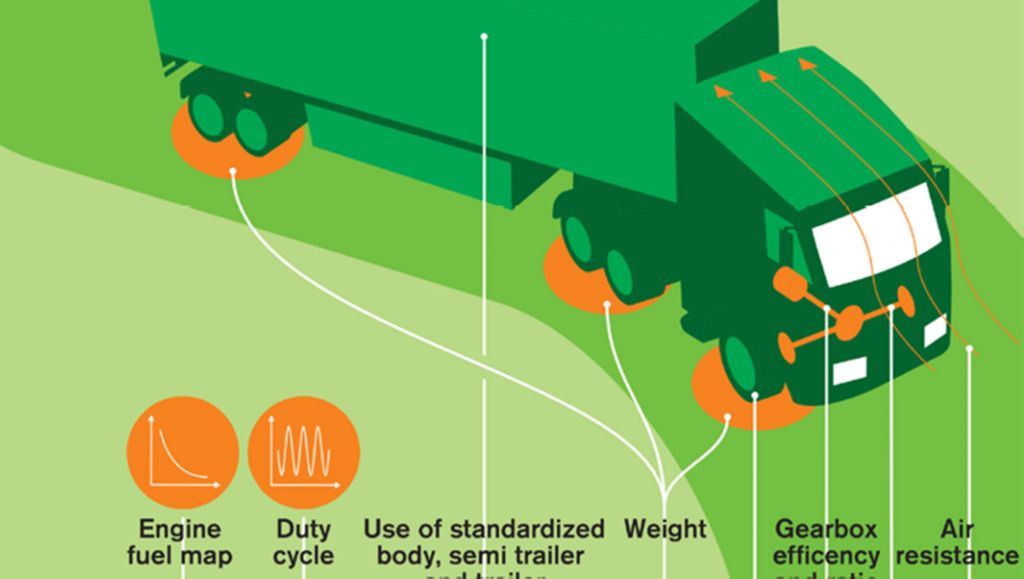Upcoming CO2 and fuel consumption regulations: What you need to know


What is the new regulation?
From 2019, new EU legislation will require all heavy-duty trucks sold in Europe to come with declared fuel consumption and CO2 emissions.
Why is it being introduced?
Heavy-duty trucks account for roughly five per cent of greenhouse gas emissions in Europe. However, unlike passenger cars, heavy-duty trucks are typically custom-built to meet specific customer requirements, and come in a wide variety of different sizes and configurations.
Many of these customisations, such as the number of axles, engine power, transmission, tyres, and cab design, have an impact on the truck’s fuel consumption. Then there is the complete vehicle to consider, and whether it is a rigid, tractor plus trailer, the size of the trailer or the type of body attached.
All these factors make it near impossible to impose a universal standard. However, through many different measurements and the European Commission’s VECTO (Vehicle Energy Consumption Calculation Tool) it will be possible to calculate specific CO2 emissions and fuel consumption for each individual truck configuration. Since all data will be calculated and certified using the same process, this will ensure consistency and transparency.
How will it work?
All components that influence fuel consumption – such as tyres, aerodynamics, engine transmission, weight, axles, etc. – will be tested separately. The results will then be used as input into the Vehicle Energy Consumption Calculation Tool, which will create a simulation to calculate the expected CO2 emissions. Even though it will be a computer simulation, the input data will be obtained from physical tests of each individual component.
How will declared CO2 and fuel consumption values affect truck owners?
The declared values will offer greater transparency and make it easier to compare customised offers from truck manufacturers. It will also help transport operators get a better insight into how fuel consumption and carbon emissions are affected by different factors, such as aerodynamics and rolling resistance. Overall, the declared values will make it easier for truck owners to choose a fuel-efficient solution for their business.
How reliable are the declared values?
While calculations are based on input data from real tests, the final results are still based on standardised computer simulations and not on real driving conditions. The declared values are unlikely to meet all truck-owners’ needs, such as taking into account trucks that drive fully-loaded in one direction and drive back empty. For this reason, the declared values should be seen as a guide when comparing truck offers and Volvo Trucks will continue to guide its customers to choosing the best solution.